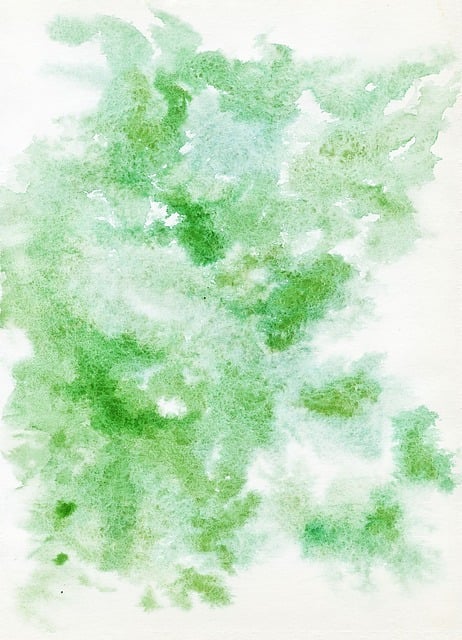Pet stain cleaning requires tailored methods based on the type of spill (urine, feces, vomit, blood, dander) and surface (carpet, hardwood, tile/linoleum). Urine stains need prompt attention to avoid odours and fabric damage; fecal matter demands thorough disinfection. Effective cleaning involves gathering suitable tools, testing solutions, blotting liquids, and using specialized or homemade cleaners. Deep cleaning sessions, combined with regular vacuuming, mopping, and laundry, prevent recurring stains and maintain a clean environment. Always test cleaning solutions on a small area to ensure safety.
Deep cleaning your home goes beyond routine vacuuming and mopping—it involves tackling stubborn pet stains that can linger on carpets, upholstery, and hard floors. This comprehensive guide dives into the world of pet stain cleaning, offering insights into understanding various types and causes of stains, preparing your space, and selecting the right tools. Learn effective step-by-step methods for removing common pet stains on multiple surfaces while preserving a clean and welcoming environment for both pets and humans.
Understanding Pet Stains: Types and Causes

Pet stains can be more complex than they appear, with various types and causes. Common pet stain sources include urine, feces, vomit, blood, and dander—each requiring specific cleaning approaches due to their unique compositions. Urine stains, for instance, often leave a pungent odor and may cause permanent damage if not treated promptly. Fecal matter, on the other hand, can harbor bacteria and parasites, necessitating thorough disinfection after deep cleaning.
Understanding these variations is crucial for effective pet stain cleaning. Different solutions are needed for each type of stain to ensure they’re removed completely and safely. Regular grooming, spot cleaning upon occurrence, and maintaining a clean living environment help prevent persistent pet stains, making deep cleaning sessions less frequent and more manageable.
Preparing Your Home for Deep Cleaning

Before diving into deep cleaning, preparing your home is a crucial step for effective pet stain cleaning. Start by clearing all surfaces and floors of any personal items or furniture that might get in the way. This includes moving couches, chairs, and tables to access carpets and hard floors easily. Additionally, gather necessary tools like a vacuum cleaner, cleaning solutions suitable for pet stains, and old towels or cloths.
Create a designated work area with all your supplies ready at hand. This organized approach will not only save time but also ensure you have everything needed to tackle each stain effectively. Remember, effective pet stain cleaning requires a systematic process, so preparing your home is the first step towards achieving a clean and fresh environment for both your pets and yourself.
Essential Tools and Equipment for Effective Pet Stain Removal

When it comes to tackling pet stains, the right tools can make all the difference in achieving a deep clean. Start with a high-quality vacuum cleaner designed for removing pet hair and debris from various surfaces. A handheld vacuum is particularly useful for reaching tight spaces and delicate fabrics. Invest in a good quality brush attachment to gently scrub tough stains without causing further damage.
Don’t forget the power of natural cleaning agents like baking soda, vinegar, and hydrogen peroxide. These safe, non-toxic solutions are effective in breaking down pet spills and odours. A spray bottle filled with a mixture of equal parts water and white vinegar is a versatile tool for pre-treating stains and refreshing fabrics. Always test any cleaning solution on a small, inconspicuous area first to ensure it won’t damage the fabric or leave behind discolouration.
Step-by-Step Guide to Deep Cleaning Pet Stains

Deep cleaning pet stains requires a systematic approach to ensure effective removal and prevent odour return. Begin by identifying the type of stain, as different substances necessitate unique cleaning methods. Next, gather the appropriate tools such as a vacuum cleaner, a solution of warm water and mild detergent, or enzyme-based cleaners designed for pet messes. Start by vacuuming the affected area to eliminate loose fur and debris. For solid matter, gently scrape off excess using a spatula or dull knife.
Prepare your cleaning solution according to the product instructions. Test a small, inconspicuous area first to ensure colourfastness and suitability for the fabric or material. Apply the solution liberally to the stain, working from the outside in to prevent spreading. Let it soak for several minutes, then gently scrub using a soft-bristled brush or cloth. Rinse thoroughly with warm water, ensuring no residual soap remains. Dry the area completely before replacing furniture covers or textiles to avoid odour reinfestation. Regular deep cleaning sessions will help maintain a fresh and pet-friendly environment.
Dealing with Common Pet Stains on Different Surfaces

When it comes to pet stains, different surfaces require distinct cleaning approaches. Carpeting, for instance, demands a thorough yet gentle treatment due to its delicate fibres. Start by blotting any visible liquid with a clean cloth or paper towel to absorb as much of the stain as possible. Then, use a carpet-specific cleaner or a mixture of warm water and mild detergent, applying it directly onto the stain. Rinse the area well and repeat if needed.
Hardwood floors present their own set of challenges. Always blot any spills immediately to prevent spreading. For dry pet messes, use a dustpan and a broom to remove solids before addressing any residual odours or stains with a specialised floor cleaner. Tile and linoleum surfaces can often be cleaned effectively with warm soapy water, followed by a thorough rinse. For more stubborn marks, consider using a mild acid-based cleaner, but always test on a small, hidden area first.
Maintaining a Clean Environment: Tips for Longevity

Maintaining a clean environment is key to preventing pet stains from reappearing. Regular vacuuming and mopping are essential practices, especially in high-traffic areas where pets frequent. Using microfiber cloths or brushes during cleaning can help trap fur, dander, and other pet residues effectively.
Additionally, keeping a consistent schedule for laundry, particularly for bedding and curtains, ensures that any accumulated pet hair or odors are removed promptly. Encouraging good hygiene habits for both you and your pets, such as regular bathing and grooming, contributes to a cleaner living space. Remember, proactive cleaning methods not only extend the lifespan of your furnishings but also create a healthier environment for both you and your furry companions.
